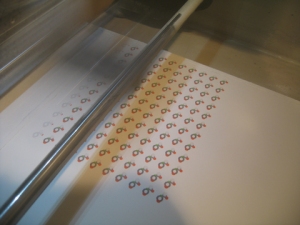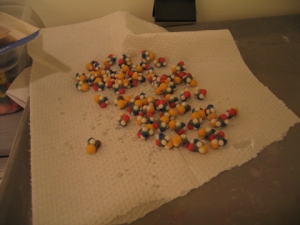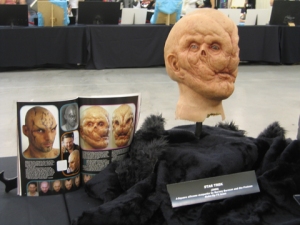One of the projects I’m currently working on at home involves building a 3D model of the right lung. To make sure the model will be as accurate as possible in terms of shape, I would need to know the lung anatomy before I begin building the model.
The first thing I did was going to a library to look at drawings and photographs of lungs. I did a few quick sketches and wrote down some notes on how I will approach this in a 3D program:


Now comes the fun part…
Next, I went to CVS and bought some Crayola modeling clay and began to build a small lung model while looking at online images of the lung. I tried to find as many variations in as many angles as possible, but most resources only showed the standard views. The e-anatomy website very helpful for this initial step, since it provides cross sectional images, labels of structures, and several different ways of presenting the structures. (The website is free, but registration is required to gain full access to the labels and features. High res images and full screen mode are available with a fee, but for our purpose this isn’t necessary.)
The purpose of making a clay model is to get a concrete physical sense of the three-dimensional shape. I find this step very important because it forces you to piece together two-dimensional visuals into a three-dimensional object. It is through this process that I begin to realize the complexity of the shape of a lung.
Below: Clay lung, heart, and a piece of unused clay.

To begin the digital visualization process, I looked further to find visualization tools that would allow me to use actual human data, look at the structures from various angles, and isolate unnecessary structures. Osirix, an open source DICOM viewer, is perfect for the job. It even has data sets available for download. The only problem is…Osirix is Macs only, and I only have access to PCs.
After poking around for a while, I found a similar product called VolView that works on a PC. VolView comes with a $1000 yearly or a $2500 unlimited licencing fee, but it has a 30 day free trial for download. I was able to import a data set from the Osirix website into VolView. My impression of VolView after two days is that it is very easy to navigate, comes with instructions (Help –> Help Topics), gives good results, and has powerful features. One thing I haven’t figured out is whether there is a cut feather that allows the user to trim away unnecessary parts. There seems to be a segmentation tool under the “Analysis” tab, but the instructions for this feature is limited and it is a feature that does not allow “undo.” That is scary. The first time I tried it, it messed up a model I had been playing with for two hours, but it warns you first so you feel like it’s your own fault for not listening. Luckily I was able to reproduce the same result ten minutes later. Here is a screen shot of my lung visualization:

…and a detailed shot of the lung. You can see the bronchi entering the right lung, but notice there are still some artifacts on the side.

*See “Modeling Lung Anatomy” for the next step in this process.





 Above: Rapid prototyping machine printing an array of molecules.
Above: Rapid prototyping machine printing an array of molecules.
 Above: A display case filled with molecular models.
Above: A display case filled with molecular models.

 Below: Bullet hole on skin with fake blood. Move one more foot away and you won’t see the edges anymore.
Below: Bullet hole on skin with fake blood. Move one more foot away and you won’t see the edges anymore. Below: Airbrush demo
Below: Airbrush demo Below: Museum area showing masks and props from movies.
Below: Museum area showing masks and props from movies. Below: Student competition (second day, fantasy make-up)
Below: Student competition (second day, fantasy make-up)